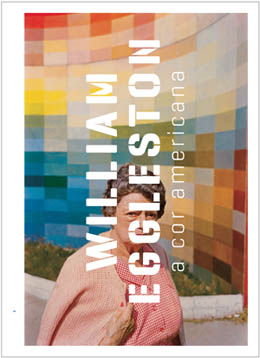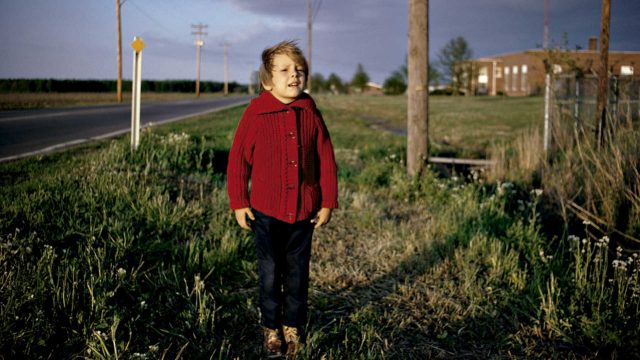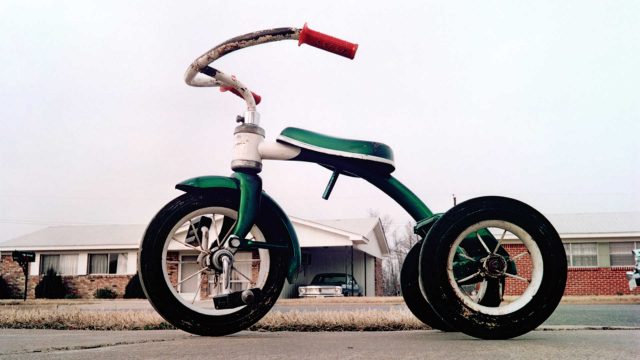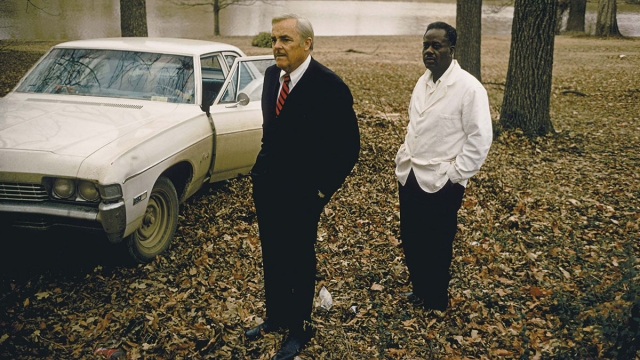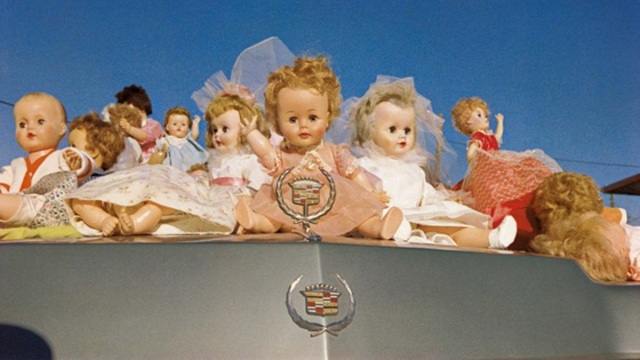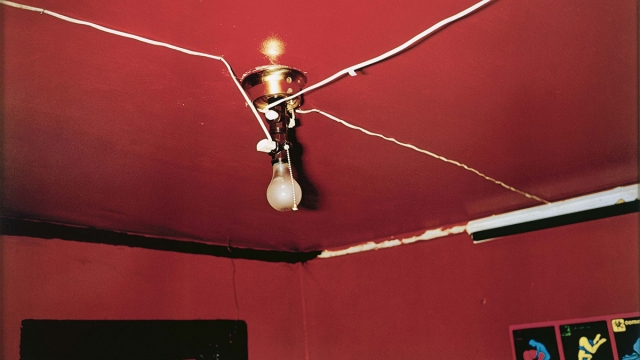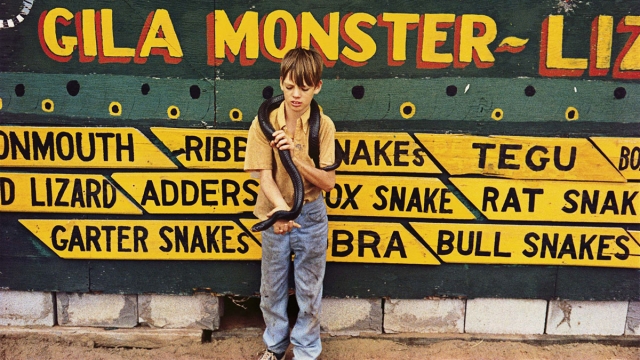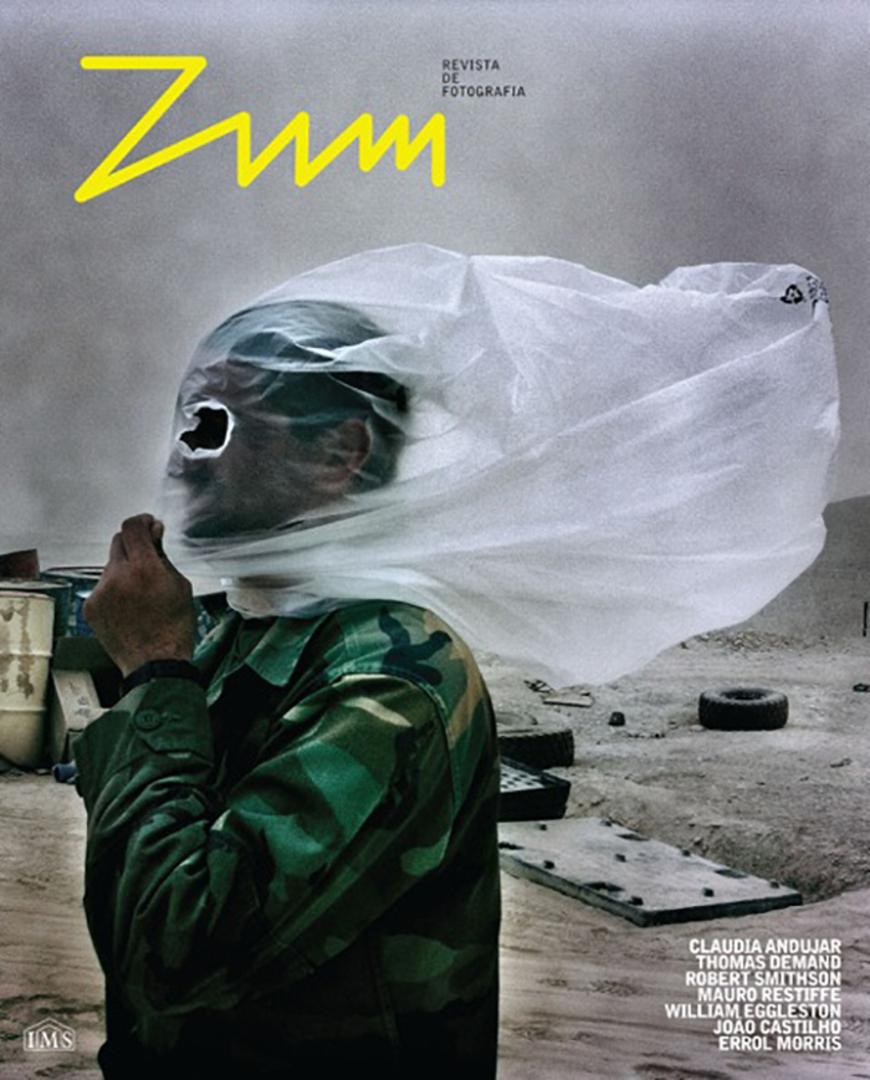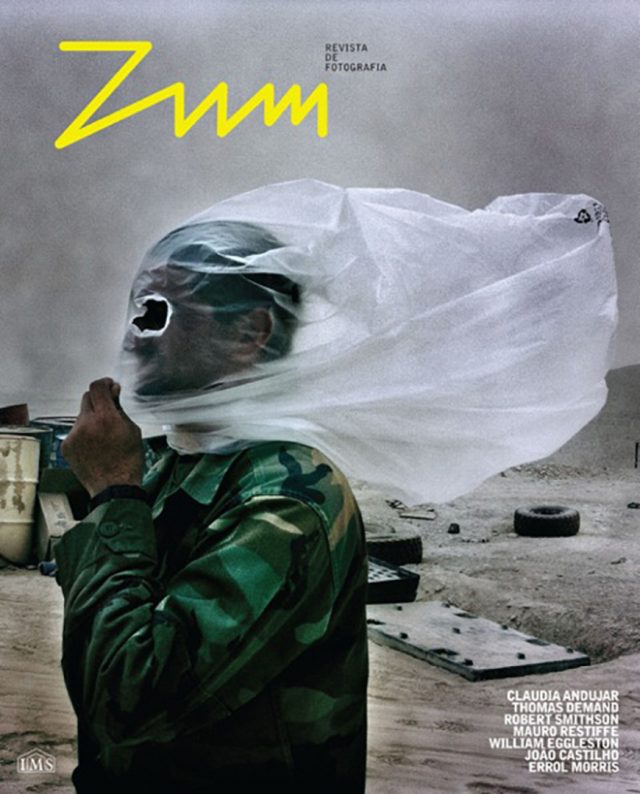O Instituto Moreira Salles apresentou William Eggleston, a cor americana, maior exposição individual do fotógrafo norte-americano já realizada no mundo. A mostra apresentou 172 obras, pertencentes a coleções prestigiosas como a do Museu de Arte Moderna de Nova York, a do Museum of Fine Arts de Houston, do acervo pessoal do artista e das galerias Cheim & Read e Victoria Miro.
William Eggleston é um dos maiores nomes da história da fotografia do século XX. Suas famosas imagens coloridas apresentam o cotidiano e a paisagem das pequenas cidades e subúrbios do sul dos Estados Unidos, a região natal do fotógrafo, durante os anos 1960 e 1970. Eggleston abriu novos caminhos para a fotografia ao mirar suas lentes nos elementos que simbolizavam a modernização americana (carros, estradas, supermercados, outdoors, shopping centers, estacionamentos, motéis), ao apresentar essa realidade em cores vibrantes, e ao registrar o próprio dia a dia, apresentando amigos, familiares e outros personagens em imagens que combinam intimidade e estranhamento. Nos anos de Elvis Presley e Martin Luther King, o sul dos Estados Unidos ainda vivia as cicatrizes do passado escravocrata, com intensos conflitos raciais e uma classe média interessada em usufruir dos novos padrões de consumo.
Curadoria
Thyago Nogueira
Assistência de curadoria
Valentina Tong
Online
#WilliamEgglestonIMS
Exposição encerrada
14/3 a 28/6/2015
Terças a domingos e feriados (exceto segundas), das 11h às 20h.
IMS Rio
Galeria principal
Rua Marquês de São Vicente, 476
Gávea - Rio de Janeiro/RJ
Contato
(21) 3284-7400
[email protected]
Imprensa
(11) 3371-4455
[email protected]
William Eggleston, a cor americana
O catálogo traz textos inéditos do músico David Byrne, do escritor Geoff Dyer, do crítico de arte Richard Woodward e do curador Thyago Nogueira, além da primeira tradução para o português do texto seminal de John Szarkowski, publicado no catálogo William Eggleston´s Guide (1976).
156 páginas. Formato: 31 cm x 22,5 cm
ISBN: 9788583460213
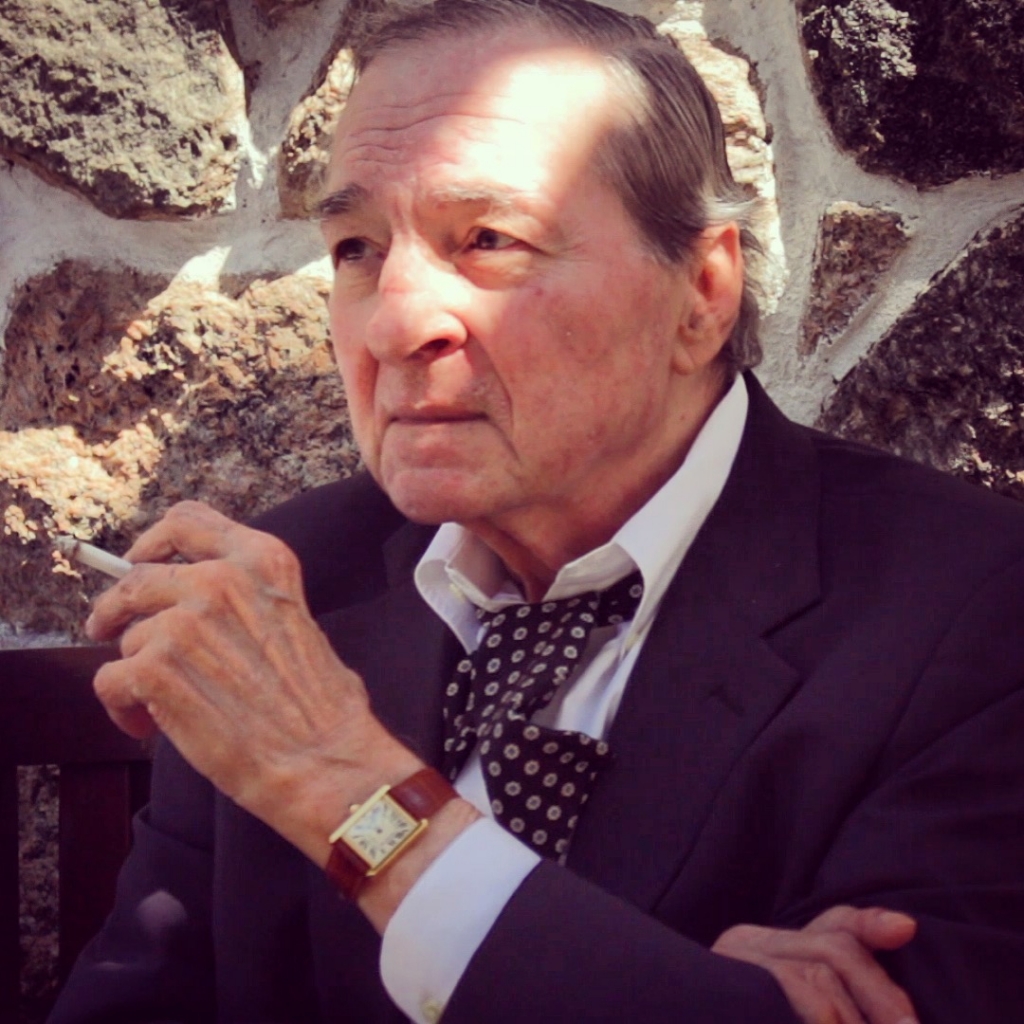
Nascido em 1939 em Memphis, Tennessee. O MoMA/NY apresentou em 1976 a exposição Fotografias. Em 1998, Eggleston ganhou o prestigioso prêmio Hasselblad, e, em 2004, o Infinity Awards, do International Center of Photography. Sua obra foi objeto de inúmeros livros, entre eles William Eggleston´s Guide (1976), Chromes (2011) e Los Alamos (2012). Em 2008, o Whitney Museum of American Art fez uma das maiores retrospectivas de sua obra. Em 2002, a Documenta de Kassel apresentou uma seleção de suas fotografias. O Eggleston´s Artistic Trust, que preserva e divulga o trabalho do fotógrafo, foi fundado em 1992, em Memphis, onde o artista vive e trabalha.
Por que William Eggleston é importante para a fotografia?
- Em vez de temas “nobres”, Eggleston documentou o cotidiano aparentemente banal do sul dos Estados Unidos, com sua profusão de shoppings de estrada, supermercados, estacionamentos e vitrines;
- O olhar sobre o cotidiano também se estendeu aos amigos e à família, objeto de fotografias que apresentam uma combinação de mistério e intimidade
- Foi objeto de uma polêmica exposição de fotografia colorida no Museu de Arte Moderna de Nova York em 1976, num período em que a fotografia em preto e branco ainda dominava as exposições de arte;
- Trouxe para a fotografia autoral o colorido da fotografia publicitária e a liberdade formal da fotografia amadora;
- Seu inventário fotográfico do sul dos Estados Unidos se tornou sinônimo do modo de vida americano dos anos 1960 e 1970;
- Sua visão do sul do Estados Unidos e seu uso da cor na fotografia influenciou gerações subsequentes de fotógrafos, cineastas e outros artistas visuais.
Alguns artistas influenciados por William Eggleston:
- os cineastas Wim Wenders, David Lynch, Sofia Coppola, Gus Van Sant e Karim Aïnouz, entre muitos outros;
- os fotógrafos Alec Soth, Nan Goldin, Wolfgang Tillmans, Ryan McGinley, entre muitos outros.
Não há novos eventos previstos.
A segunda edição da revista de fotografia do IMS traz como destaque a obra de Claudia Andujar; na capa, o trabalho do fotógrafo húngaro Balazs Gardi; entrevista exclusiva com o documentarista Errol Morris; e imagens de William Eggleston. E ainda os hotéis do mineiro João Castilho e ensaio de Mauro Restiffe no bairro da Luz.
Coleção: ZUM
Lançamento: Abril/2012
Opening: March 14th at 5 p.m. featuring the artist’s presence, the screening of William Eggleston in the Real World, a documentary film by Michael Almereyda, and the launch of the catalogue.
More information: http://www.revistazum.com.br/we2
Starting March 14th, Instituto Moreira Salles/Rio de Janeiro presents William Eggleston, American Color, the largest solo exhibition dedicated to American photographer William Eggleston. The exhibit will feature around 170 original photos coming from famous collections including the Museum of Modern Art in New York (MoMA), the Museum of Fine Arts in Houston (MFAH), Eggleston Artistic Trust, Cheim & Read and Victoria Miro galleries.

Memphis, 1971. Do livro "Guia de William Eggleston", 1976. Eggleston Artistic Trust. Cortesia Cheim & Read, Nova York.
William Eggleston is one of the most important artists in the history of photography. His vibrant and most famous images depict day-to-day life in small cities and suburbs of the American south, constructing an inventory of American culture in the 1960s and ‘70s. Eggleston opened new ground for photography by combining a focus on the symbols of modernization (roads, cars, supermarkets, billboards, shopping malls, parking lots, fashion), a particular use of color saturation and a diaristic approach while documenting friends, family members and anonymous characters.
William Eggleston first found success in 1976, when the influential John Szarkowski, at the time the director of the photography department at MoMA, organized an exhibition of his color photos at the institution. Up until then, black and white photography was the norm. The exhibition, which presented ordinary scenes, a freedom in formal composition and the seductive nature of color – at the time most often seen in amateur and commercial photography–, became the subject of an intense debate in the photography community, and was subjected to harsh criticism. Over the years, however, the exhibition came to be seen as a milestone.
Today, Eggleston’s images are among the most celebrated and influential in 20th century photography, with a wide variety of admirers: from photographer Nan Goldin and musician David Byrne to filmmaker Wim Wenders and Brazilian artist Karim Aïnouz. Such movies as Gus Van Sant’s Elephant were notoriously inspired by the photographer’s visual world. Both Van Sant and David Byrne have invited Eggleston to collaborate on projects.

Sem título. Da série "Los Alamos", 1965-1968 e 1972-1974. Eggleston Artistic Trust. Cortesia Cheim & Read, Nova York.
William Eggleston, American Color is one of the biggest exhibitions ever done on the photographer and will bring to Brazil for the first time an extensive selection of works from 1960s and ‘70s, considered to be Eggleston’s golden years. One of the rooms will feature many of the photos included in the legendary 1976 exhibition at MoMA. Two other rooms will present the famous portfolio Los Alamos, which resulted from a series of road trips around the Mississippi Delta and all the way to California from 1965 to 1974.
The photos on display will include over 150 rare and delicate photographs made through dye-transfer, a near-extinct printing technique, which became the artist’s trademark for allowing him a precise control of color and intense saturation. To those who are already familiar with Eggleston’s work, the exhibition will also feature lesser-known, but still important works from the period. Among them, the formidable set of portraits made on bars and streets with a large format camera in 1974 and known as 5x7, in reference to the size of the film used. A set of five black and white photos, made before Eggleston embraced color definitively, will also be on display. The experimental film Stranded in Canton, shot in black and white in 1973 and 1974, with improvisations, performances and intimate footage of family members and friends in the bars of New Orleans will also be on view.

Sem título, c. 1971-1973. Da série "Troubled Waters", 1980. Eggleston Artistic Trust. Cortesia Cheim & Read, Nova York.
William Eggleston, American Color was curated by Thyago Nogueira, editor of the ZUM magazine and coordinator of contemporary photography for the IMS. The exhibition design was created by Martin Corullon of the firm Metro Associados, and the visual identity was designed by graphic artist Luciana Facchini.
The exhibition is accompanied by a catalog with texts by musician David Byrne, writer Geoff Dyer, art critic Richard Woodward and curator Thyago Nogueira, as well as the first Portuguese-language translation of the seminal text by John Szarkowski published in the catalog William Eggleston´s Guide (1976). Available at: lojadoims.com.br
About the photographer
William Eggleston was born in Memphis, Tennessee in 1939. In 1976, MoMA/NY presented the exhibition Photographs, which set Eggleston reputation as one of the most important photographers of 20th Century. Eggleston won the prestigious Hasselblad Award in 1998 and an Infinity Award from the International Center of Photography in 2004. His work has been the object of numerous books, including William Eggleston´s Guide (1976), Chromes (2011) and Los Alamos revisited (2012). In 2008, the Whitney Museum of American Art held one of the largest retrospectives of his work. In 2002, dOCUMENTA in Kassel displayed a selection of his photos. The Eggleston Artistic Trust, which preserves and disseminates his work, was founded in 1992 in Memphis, where the artist lives and works.

